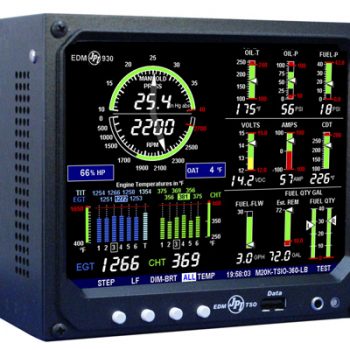 When the passengers are informed that an aircraft cannot take off due to technical reasons, it usually means that the airline not only has to have the aircraft towed away for expensive emergency repairs, it has to make alternate arrangements to fly the passengers maybe even provide accommodation and food while the passengers are waiting. All put together, it can be one big frightful bill and just a few of these in a year would be enough to dent the airline's profitability. When the passengers are informed that an aircraft cannot take off due to technical reasons, it usually means that the airline not only has to have the aircraft towed away for expensive emergency repairs, it has to make alternate arrangements to fly the passengers maybe even provide accommodation and food while the passengers are waiting. All put together, it can be one big frightful bill and just a few of these in a year would be enough to dent the airline's profitability.
The above is of course, is the better scenario when compared to an aircraft that develops a technical fault during flight. That one can be really scary. Modern well run airlines will go to great lengths to ensure such incidents are minimized if not totally eliminated and they do this through aircraft engine monitori
...
Read more »
|
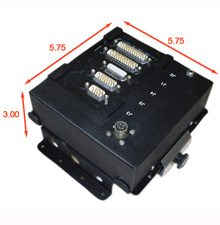 The basics of electronic data management systems (EDMS) in aircraft are pretty simple. The EDMS essentially consists of two parts – probes & sensors and the display unit(s). The probes and sensors are located at various critical parts of the aircraft and convert heat, pressure or whatever it is supposed to sense, into electrical signals usually in the form of volts. These signals are interpreted by the display unit and displayed in a manner that makes sense to the pilot(s). The basics of electronic data management systems (EDMS) in aircraft are pretty simple. The EDMS essentially consists of two parts – probes & sensors and the display unit(s). The probes and sensors are located at various critical parts of the aircraft and convert heat, pressure or whatever it is supposed to sense, into electrical signals usually in the form of volts. These signals are interpreted by the display unit and displayed in a manner that makes sense to the pilot(s).
There are two types of probes and sensors used in modern aircraft; internal and external. For obvious reasons, most of the probes and sensors ar
...
Read more »
|
During World War II and in response to the war ministry's directives, aircraft manufacturers had to constantly try and improve the engine power as well as the range of their aircraft – especially the bombers. The pressure to increase power and range happened with both – the allied forces and Nazi Germany. So how does the presence of an EGT probe and the Exhaust Gas Temperature display unit (EGT) help improve aircraft power, range and assist in precision engine monitoring?
This is how it worked:
If fuel is not efficiently burnt, it passes out of the engine and into the exhaust. Such fuel laden exhaust is termed “rich”. On the other hand, if there is more air-to-fuel in the exhaust, it is termed as “lean”. The aircraft engineers noticed a correlation between the exhaust gas tempera
...
Read more »
|
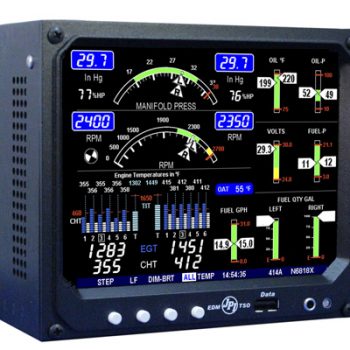 An aircraft digital instrument and monitoring system is not something you find in a aircraft maintenance garage; it is something you find inside the cockpit of a modern or an upgraded aircraft. An aircraft digital instrument and monitoring system is not something you find in a aircraft maintenance garage; it is something you find inside the cockpit of a modern or an upgraded aircraft.
Aircraft Digital Instrument and Monitoring System basically replaced the OEM vintage dials and gauges that aircraft until a decade or so ago, came equipped with.
With digital age came the opportunity to combine all (as in the case of single and twin engine aircraft), or groups of dials and gauges into a single digital monitoring instrument or display unit – much like the EDM 960 for twin engine aircraft manufactured by J.P. Instruments (see picture).
The advantage of these modern Engine Data Management Systems (EDM's) is that they combine with mo
...
Read more »
|
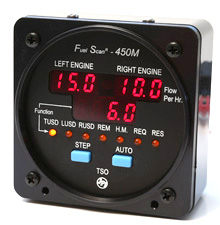 If you are still calculating fuel status manually then isn't it high time you switched over to an automatic single or multi-engine aircraft fuel management system – if not for your own safety, at least for the safety of your passengers? If you are still calculating fuel status manually then isn't it high time you switched over to an automatic single or multi-engine aircraft fuel management system – if not for your own safety, at least for the safety of your passengers?
A modern single or multi-engine aircraft fuel management system especially like the ones manufactured by J.P. Instruments not only just displays the fuel consumption and fuel in the tank(s), it can be integrated with your GPS so you know if there will be enough fuel for your selected flight path. You can even change the flight mid-way and the integrated system will recalculate the fuel requirement as well as reserve quantity at end of flight path or balance fuel
...
Read more »
|
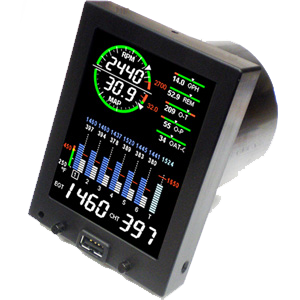 Time to upgrade your cockpit and puzzled about which is the best and most advanced and accurate engine monitoring system? We'll break this down for you and help you decide quickly. Time to upgrade your cockpit and puzzled about which is the best and most advanced and accurate engine monitoring system? We'll break this down for you and help you decide quickly.
There are dozens of avionics manufacturers that offer aircraft engine monitor equipment. They all tend to offer a mix of stand-alone monitors as well as integrated units. Your friends will probably tell you that if you only need to replace a gauge or two then, do just that. Replace just what you need with the modern digital versions. Our experts on the other hand, would prefer you take a holistic view of the cockpit and the overall technology currently in it.
If the bulk of the engine monitoring systems currently i
...
Read more »
|
 Time to upgrade your cockpit and puzzled about which is the best and most advanced and accurate engine monitoring system? We'll break this down for you and help you decide quickly. Time to upgrade your cockpit and puzzled about which is the best and most advanced and accurate engine monitoring system? We'll break this down for you and help you decide quickly.
There are dozens of avionics manufacturers that offer aircraft engine monitor equipment. They all tend to offer a mix of stand-alone monitors as well as integrated units. Your friends will probably tell you that if you only need to replace a gauge or two then, do just that. Replace just what you need with the modern digital versions. Our experts on the other hand, would prefer you take a holistic view of the cockpit and the overall technology currently in it.
If the bulk of the engine monitoring systems currently i
...
Read more »
|
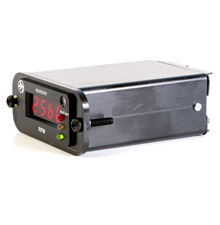 A flexible aircraft fuel gauge is one that can be programmed by the pilot. By powerful we mean it can automatically provide data to your GPS or on-board integrated electronic flight instrument system which in turn can calculate fuel status for a particular flight path or destination. A flexible aircraft fuel gauge is one that can be programmed by the pilot. By powerful we mean it can automatically provide data to your GPS or on-board integrated electronic flight instrument system which in turn can calculate fuel status for a particular flight path or destination.
Difficult to believe but there are many pilots out there that still rely on the old method of calculating fuel use i.e. with a calculator. Flying since before the digital age when aircraft gauges used to be faulty at best, they think the manual way of calculating fuel use is still accurate.
...
Read more »
|
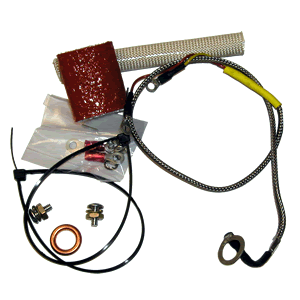 Ever since humans have learnt to fly, aircraft technology has taken giant leaps and continues to advance even further. Today, the pilot knows just about everything that is happening in the plane - from the cockpit to the aircraft tail and everything in between and have that information thanks to sensing systems installed in the aircraft. Ever since humans have learnt to fly, aircraft technology has taken giant leaps and continues to advance even further. Today, the pilot knows just about everything that is happening in the plane - from the cockpit to the aircraft tail and everything in between and have that information thanks to sensing systems installed in the aircraft.
Modern aircraft whether single or multi-engine have numerous sensors fitted all over the aircraft. These sensors range from array pressure sensors, temperature and non-temperature compensated pressure sensors, general purpose temperature compensated pressure sensors, un-compensated pressure sensors, general purpose explosion pr
...
Read more »
|
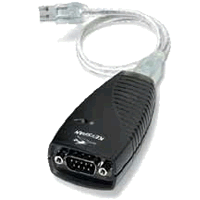 J.P. Instruments has been designing and manufacturing aircraft engine data management systems since 1979. J.P. Instruments has been designing and manufacturing aircraft engine data management systems since 1979.
Each aircraft engine data management systems (EDMS), is meticulously designed and tested. Initially they are called “experimental” because the new features in it are still being analysed. “Experimental” does not mean un-tested or uncertified. After analysis and customer feedback, the company decides whether the new features incorporated into the aircraft engine data experimental management systems are useful enough to continue or be dropped. Customer reviews form an important part of this process. It is also possible that the company
...
Read more »
| |

 When the passengers are informed that an aircraft cannot take off due to technical reasons, it usually means that the airline not only has to have the aircraft towed away for expensive emergency repairs, it has to make alternate arrangements to fly the passengers maybe even provide accommodation and food while the passengers are waiting. All put together, it can be one big frightful bill and just a few of these in a year would be enough to dent the airline's profitability.
When the passengers are informed that an aircraft cannot take off due to technical reasons, it usually means that the airline not only has to have the aircraft towed away for expensive emergency repairs, it has to make alternate arrangements to fly the passengers maybe even provide accommodation and food while the passengers are waiting. All put together, it can be one big frightful bill and just a few of these in a year would be enough to dent the airline's profitability. The basics of electronic data management systems (EDMS) in aircraft are pretty simple. The EDMS essentially consists of two parts – probes & sensors and the display unit(s). The probes and sensors are located at various critical parts of the aircraft and convert heat, pressure or whatever it is supposed to sense, into electrical signals usually in the form of volts. These signals are interpreted by the display unit and displayed in a manner that makes sense to the pilot(s).
The basics of electronic data management systems (EDMS) in aircraft are pretty simple. The EDMS essentially consists of two parts – probes & sensors and the display unit(s). The probes and sensors are located at various critical parts of the aircraft and convert heat, pressure or whatever it is supposed to sense, into electrical signals usually in the form of volts. These signals are interpreted by the display unit and displayed in a manner that makes sense to the pilot(s). An aircraft digital instrument and monitoring system is not something you find in a aircraft maintenance garage; it is something you find inside the cockpit of a modern or an upgraded aircraft.
An aircraft digital instrument and monitoring system is not something you find in a aircraft maintenance garage; it is something you find inside the cockpit of a modern or an upgraded aircraft. If you are still calculating fuel status manually then isn't it high time you switched over to an automatic single or multi-engine aircraft fuel management system – if not for your own safety, at least for the safety of your passengers?
If you are still calculating fuel status manually then isn't it high time you switched over to an automatic single or multi-engine aircraft fuel management system – if not for your own safety, at least for the safety of your passengers? Time to upgrade your cockpit and puzzled about which is the best and most advanced and accurate engine monitoring system? We'll break this down for you and help you decide quickly.
Time to upgrade your cockpit and puzzled about which is the best and most advanced and accurate engine monitoring system? We'll break this down for you and help you decide quickly. A flexible aircraft fuel gauge is one that can be programmed by the pilot. By powerful we mean it can automatically provide data to your GPS or on-board integrated electronic flight instrument system which in turn can calculate fuel status for a particular flight path or destination.
A flexible aircraft fuel gauge is one that can be programmed by the pilot. By powerful we mean it can automatically provide data to your GPS or on-board integrated electronic flight instrument system which in turn can calculate fuel status for a particular flight path or destination. Ever since humans have learnt to fly, aircraft technology has taken giant leaps and continues to advance even further. Today, the pilot knows just about everything that is happening in the plane - from the cockpit to the aircraft tail and everything in between and have that information thanks to sensing systems installed in the aircraft.
Ever since humans have learnt to fly, aircraft technology has taken giant leaps and continues to advance even further. Today, the pilot knows just about everything that is happening in the plane - from the cockpit to the aircraft tail and everything in between and have that information thanks to sensing systems installed in the aircraft. J.P. Instruments has been designing and manufacturing aircraft engine data management systems since 1979.
J.P. Instruments has been designing and manufacturing aircraft engine data management systems since 1979.